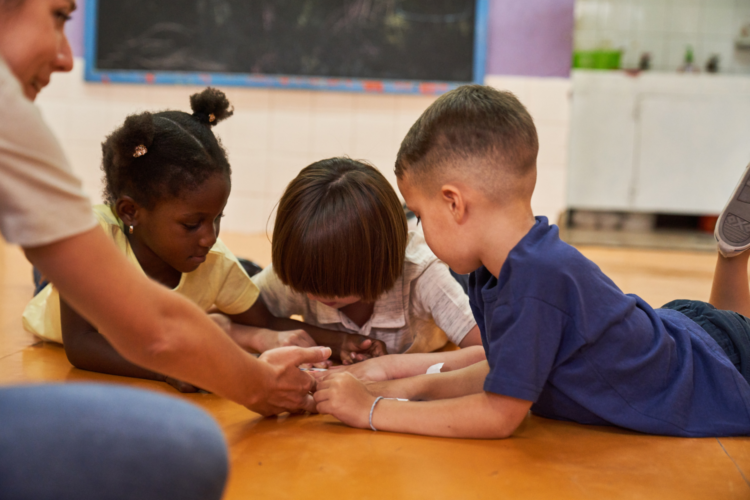By Tony O’Reilly-
A multi-agency action plan involving the police, education, health and social care services has been recommended to enhance child protection arrangements in Northern Ireland.
The recommendation comes following a joint pilot inspection of child protection arrangements in the Southern Health and Social Care Trust area.
Criminal Justice Inspection Northern Ireland (CJI), the Regulation and Quality Improvement Authority (RQIA) and the Education and Training Inspectorate (ETI) have joined forces for the first time for an inspection of this type.
It examined how justice, health and social care and education organisations work together to protect children where there are concerns about risk of harm.
It found that while a joint pilot inspection of the Southern Health and Social Care Trust found evidence of “innovative practice” in protecting children, an effective multi-agency response to concerns about children referred by services was not fully embedded.
The inspection examined how justice, health and social care and education organisations work together to protect children where there were concerns about risk of harm.
The inspection report published on Monday is the first of its kind to take place in Northern Ireland, and considered how police officers, health and social care professionals as well as teachers and education staff were supported in their work.
“This is the first time Criminal Justice Inspection Northern Ireland (CJI), the Regulation and Quality Improvement Authority (RQIA) and the Education and Training Inspectorate (ETI) have worked together on an inspection of this type,” said Jacqui Durkin, Chief Inspector of Criminal Justice in Northern Ireland.
“Each inspectorate has different legislative powers and working practices, and we were conscious of the pressures on frontline services, but we were committed to completing this pilot inspection together. We took time to carefully plan how we would work together to gather and assess evidence to inform our findings and this joint report,” she explained.
The joint pilot inspection looked at the point or referral response or ‘front door’ when children aged 12 to 17 years were identified as being at risk of harm or in need of protection within the Southern Trust area.
During fieldwork, inspectors visited policing teams, social work and health care teams, including a hospital Emergency Department, and schools and looked at the response provided under the three strands of Promote, Prevent and Protect.
Inspectors also spoke to staff working in each organisation and setting and looked at information and data to identify strengths in the current multi-agency arrangements and opportunities for development that could enhance partnership working and improve outcomes for children.
“The joint inspection team identified that when the threat of harm was acute, there was evidence that risk was identified in a timely way,” said Ms Briege Donaghy, chief executive of the RQIA.
“We also found there was a strong culture of promoting the child’s right to be safe among the professionals we talked to,” added Mrs Faustina Graham, chief inspector with the ETI.
Inspector found evidence of “innovative practice” when schools, social workers and police officers worked collaboratively. They identified opportunities to support and engage with children and develop a more holistic understanding of concerns about children.
Inspectors were also encouraged by how the Police Service of Northern Ireland (PSNI) and schools worked together under Operation Encompass to support children where there had been reported domestic abuse at home, with one school providing evidence of a well-coordinated multi-agency response, which ensured children arriving in school received the right help at the right time, before the start of the school day.
“While there is much to be encouraged by, as a result of this joint pilot inspection, especially around the commitment and contribution made by dedicated individual staff in the context of significant resource pressures, the inspection team have identified a number of areas for development,” said Mrs Graham.
Inspectors said more opportunities were needed for police officers, health and social care staff and teaching and other education staff working in child protection roles to undertake multi-disciplinary training to enable them to learn and develop skills together.
“This would enhance understanding and clarity about each other’s roles and develop clearer expectations and knowledge of the systems and processes in place so justice, health and social care and education can effectively work together to progress referrals, safeguarding and protection issues,” said Ms Donaghy.
“We would also encourage the inspected organisations and professionals working in this area to consider how they could work better together to improve the response to children and better evidence the voice of the child in the assessment and planning undertaken on what should happen to each child,” said Ms Durkin.
An effective multi-agency response to concerns about risk of harm to children referred by services to the ‘front door’ was also not fully embedded, with safeguarding actions often considered to be the responsibility of the Trust.
“Greater understanding of the effectiveness of multi-agency working to improve outcomes for children was required to avoid working in silos,” said the report. “This would also enable leaders to ensure effective scrutiny of the quality of practice.
“In order to promote more shared responsibility and partnership working, it would be important for all agencies to self-evaluate robustly and transparently the effectiveness of multi-agency work in response to concerns reported about children at the ‘front door’ or ‘Gateway’ – the ‘front door’ operated by social services, and the PSNI Central Referral Unit (CRU).
There were examples of effective practice in considering how to understand and be informed by the experiences of children and families. The PSNI and Health and Social Care partners were finalising a refreshed ‘Interface Protocol’ to support children reported missing, to include new ways of engaging with children when they returned home.
PSNI call handlers were using the Philomena Protocol to access up-todate information about individual children who had been reported missing frequently.
And electronic problem-solving folders created by Neighbourhood Policing Teams (NPTs) provided important contextual information about children’s lives to inform police officers’ interactions.
There were examples of positive collaboration between the police CRU and schools, and of police working jointly with the Trust, which gave a more holistic understanding of concerns about the child.
“For example, in one school, prompt and accurate information shared by the NPT, alongside the school’s extensive knowledge of the child, resulted in a prompt referral to the Trust whose instant response ensured the child was safeguarded within hours,” said the report.
Measuring outcomes in the effectiveness of multi-agency working in promoting children’s right to be safe was at an early stage and needed further development to demonstrate more clearly the impact of the work, said inspectors. Nevertheless, there were examples across the agencies of measurements available,
In conclusion, the heads of the three inspection bodies said they encouraged other health and social care trust areas, police districts and education settings to consider and use the findings of and recommendations from the pilot inspection, to improve how children are protected elsewhere in Northern Ireland.
“We have asked the PSNI, Education Authority and the Southern Trust to develop a multi-agency action plan for implementation to enhance their partnership approach to protecting children.
“We also hope the findings and learning from this joint pilot inspection of child protection arrangements will help the Departments of Health, Justice and Education develop a framework for child protection inspection in Northern Ireland,” said Ms Durkin, Ms Donaghy and Mrs. Graham.




